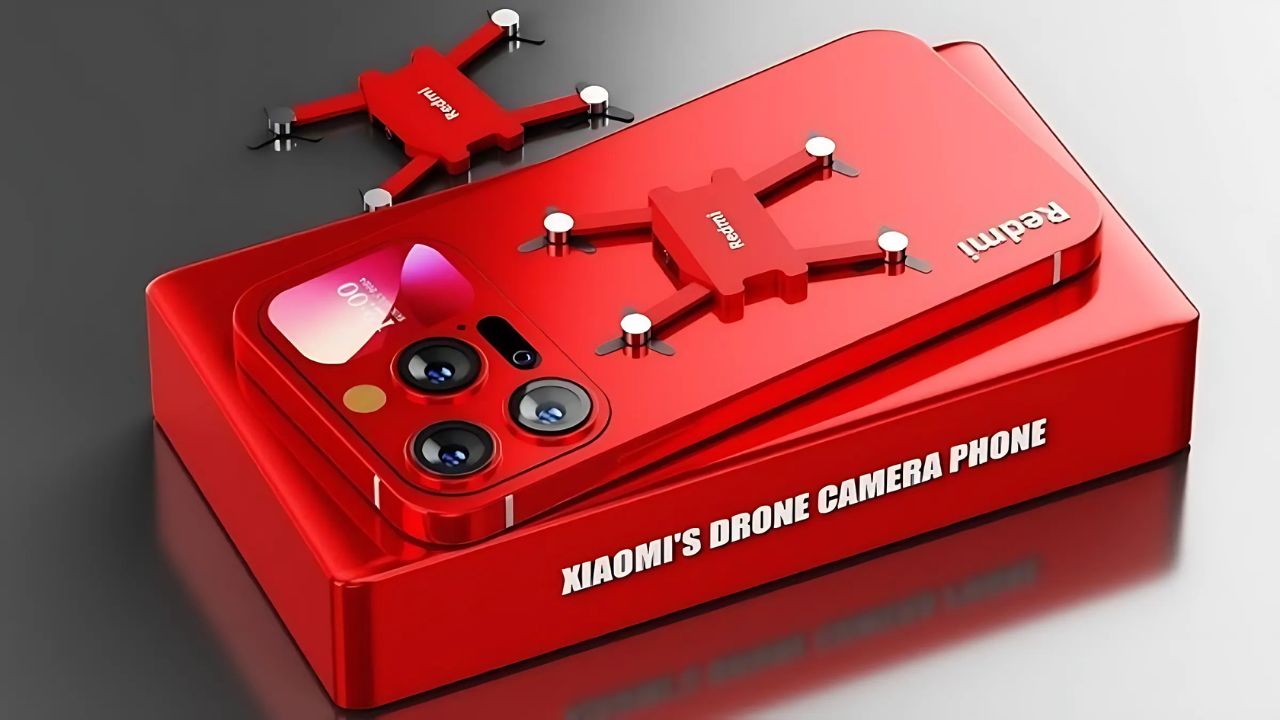Redmi Revolutionary Flying Camera Smartphone: In a groundbreaking move that has sent shockwaves through the tech industry, Xiaomi’s sub-brand Redmi has announced the launch of its most innovative smartphone to date: the Redmi AirShot. This cutting-edge device features a detachable flying camera module, promising to revolutionize mobile photography and redefine the boundaries of smartphone capabilities.
A Leap into the Future
The Redmi AirShot, set to hit the market in early 2025, represents a paradigm shift in smartphone design and functionality. At first glance, it appears to be a sleek, high-end smartphone with a premium build quality and a vibrant 6.7-inch AMOLED display. However, the true magic lies in its unique camera system.
The Flying Camera Module
The standout feature of the Redmi AirShot is its detachable flying camera module. This compact, drone-like unit houses a sophisticated camera system that can be ejected from the phone’s body and controlled remotely. The module is equipped with miniature propellers and an advanced stabilization system, allowing it to hover steadily in the air and capture photos and videos from previously impossible angles.
“We’ve always pushed the boundaries of what’s possible in smartphone photography,” said Lei Jun, CEO of Xiaomi. “With the Redmi AirShot, we’re not just thinking outside the box – we’re literally flying out of it.”
Cutting-Edge Camera Capabilities
The flying camera module boasts a 108MP main sensor with optical image stabilization, a 12MP ultra-wide lens, and a 5MP macro camera. This versatile setup ensures high-quality shots in various scenarios, from sweeping landscapes to intricate close-ups. The module also features a 4K-capable front-facing camera, perfect for aerial selfies and vlogging.
What sets the AirShot apart is its ability to capture dynamic, moving shots. Users can program flight paths for the camera module, allowing for smooth panning shots, dramatic reveals, and even 360-degree panoramas – all without the need for additional equipment.
AI-Powered Photography
Redmi has incorporated advanced AI algorithms into the AirShot’s camera system. These algorithms work in tandem with the flying module to automatically adjust settings for optimal results. The AI can analyze the scene, identify subjects, and even predict movement to capture the perfect shot.
“Our AI system is like having a professional photographer and cinematographer built into your phone,” explained Dr. Zhang Wei, head of Redmi’s AI division. “It can make split-second decisions to ensure you never miss that perfect moment.”
Safety and Practicality
Addressing potential concerns about safety and privacy, Redmi has implemented several safeguards into the AirShot’s design. The flying module is equipped with obstacle avoidance sensors and an automatic return-to-phone feature if it strays too far or runs low on battery. Additionally, the module emits a subtle but audible hum when in flight, alerting people nearby to its presence.
The module’s battery life is rated for up to 30 minutes of continuous flight, with the ability to quick-charge when reattached to the phone. When not in use, it seamlessly integrates back into the phone’s body, maintaining a slim profile.
Beyond Photography
While the flying camera is undoubtedly the AirShot’s headline feature, Redmi has ensured that the rest of the phone lives up to flagship standards. Powered by the latest Qualcomm Snapdragon processor and boasting up to 16GB of RAM, the AirShot promises smooth performance for even the most demanding tasks.
The phone runs on MIUI 16, based on Android 15, and includes a host of features designed to complement the flying camera. These include an intuitive flight control interface, advanced video editing tools, and seamless integration with social media platforms for easy sharing of aerial content.
Market Impact and Pricing
The announcement of the Redmi AirShot has sent ripples through the smartphone industry, with competitors scrambling to respond to this innovative leap forward. Analysts predict that this could spark a new trend in smartphone design, with other manufacturers likely to explore similar concepts in the coming years.
“Redmi has thrown down the gauntlet,” said tech analyst Sarah Chen. “This isn’t just a new feature – it’s a whole new category of smartphone. We’re seeing the birth of the ‘flying phone’ era.”
As for pricing, Redmi has positioned the AirShot as a premium offering, with a starting price of ₹59,999 for the base model with 8GB RAM and 128GB storage. While this places it at the higher end of Redmi’s product lineup, it’s still considerably less expensive than many flagship devices from competing brands.
Challenges and Future Prospects
Despite the excitement surrounding the AirShot, some industry experts have raised questions about its practicality and potential regulatory hurdles. The use of flying cameras in public spaces may face legal challenges in some regions, and concerns about privacy and safety will need to be addressed.
Redmi, however, remains confident in the AirShot’s potential to transform mobile photography. The company has hinted at plans for an ecosystem of accessories and add-ons for the flying camera module, including specialized lenses and extended battery packs.
A New Chapter in Mobile Innovation
The Redmi AirShot represents more than just a new smartphone; it’s a bold statement about the future of mobile technology. By literally elevating the camera beyond the confines of the phone’s body, Redmi has opened up a world of new possibilities for creative expression and content creation.
As the launch date approaches, anticipation continues to build among tech enthusiasts and photography buffs alike. Whether the Redmi AirShot will soar to new heights or remain a niche product remains to be seen, but one thing is certain: it has captured the imagination of the tech world and pushed the boundaries of what we thought possible in a smartphone.
In a market often criticized for incremental improvements and lack of true innovation, the Redmi AirShot stands out as a beacon of creativity and ambition. It serves as a reminder that there’s still room for revolutionary ideas in the smartphone industry – ideas that can lift our expectations to new heights, quite literally.
